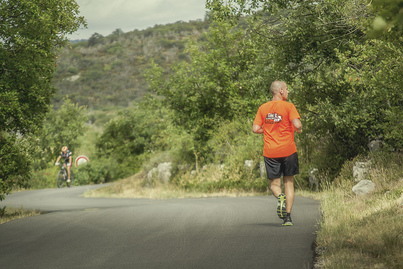- Home
- About Us
- TSPT Academy
- Online Courses
-
Resources
- Newsletter
- Business Minded Sports Physio Podcast
- Day in the Life of a Sports PT
- Residency Corner
-
Special Tests
>
-
Cervical Spine
>
- Alar Ligament Test
- Bakody's Sign
- Cervical Distraction Test
- Cervical Rotation Lateral Flexion Test
- Craniocervical Flexion Test (CCFT)
- Deep Neck Flexor Endurance Test
- Posterior-Anterior Segmental Mobility
- Segmental Mobility
- Sharp-Purser Test
- Spurling's Maneuver
- Transverse Ligament Test
- ULNT - Median
- ULNT - Radial
- ULNT - Ulnar
- Vertebral Artery Test
- Thoracic Spine >
-
Lumbar Spine/Sacroiliac Joint
>
- Active Sit-Up Test
- Alternate Gillet Test
- Crossed Straight Leg Raise Test
- Extensor Endurance Test
- FABER Test
- Fortin's Sign
- Gaenslen Test
- Gillet Test
- Gower's Sign
- Lumbar Quadrant Test
- POSH Test
- Posteroanterior Mobility
- Prone Knee Bend Test
- Prone Instability Test
- Resisted Abduction Test
- Sacral Clearing Test
- Seated Forward Flexion Test
- SIJ Compression/Distraction Test
- Slump Test
- Sphinx Test
- Spine Rotators & Multifidus Test
- Squish Test
- Standing Forward Flexion Test
- Straight Leg Raise Test
- Supine to Long Sit Test
-
Shoulder
>
- Active Compression Test
- Anterior Apprehension
- Biceps Load Test II
- Drop Arm Sign
- External Rotation Lag Sign
- Hawkins-Kennedy Impingement Sign
- Horizontal Adduction Test
- Internal Rotation Lag Sign
- Jobe Test
- Ludington's Test
- Neer Test
- Painful Arc Sign
- Pronated Load Test
- Resisted Supination External Rotation Test
- Speed's Test
- Posterior Apprehension
- Sulcus Sign
- Thoracic Outlet Tests >
- Yergason's Test
- Elbow >
- Wrist/Hand >
- Hip >
- Knee >
- Foot/Ankle >
-
Cervical Spine
>
- I want Financial Freedom
- I want Professional Growth
- I want Clinical Mastery
|
Running is a sport that continues to gain an increasing following. With that, an increase in the running population that some deem not ready to run also increases. Some view running as a fitness activity and should not be performed unless certain mobility/stability goals are met. Injuries often prevent an individual from moving to the fitness level and running. Many PT's, myself included, have instructed patients to hold off on running, while their back or foot pain is present due to concerns over worsening injury. But what do you do if you have a patient who tells you running decreases their pain? This may seem surprising to some, but I have had several patients, myself included, where running actually decreased pain. There are a couple potential reasons for this. In regards to back pain, a component of running or walking for that matter involves spinal rotation. The repetitive rotation of the spine may act as a mobilizing force to the spine. This mobilization may work similarly to repeated motions in lowering the threat level of the nervous system, especially at any "restricted" levels. In regards to foot pain, a couple theories are present. The running may act by forcing activation of intrinsic muscles, providing additional support to the foot. Remember what we learned about higher levels of contraction - they lead to overflow activation of additional muscles. An alternative theory is that the pain may have a neural component and the mobilization of the lumbar spine when running (as discussed before) leads to a decrease in neural tension and pain. I have found personally that my occasional "plantar fascia" pain only comes on if I haven't ran in a couple weeks. I have a significant lumbar component to mine as well if you recall my sciatic nerve pain. When my tibial nerve is tensioned, my plantar fascia pain is recreated during a SLR. The symptoms improve with repeated sideglides, but are completely eliminated with regular running. There is no rule as to which patients will benefit from this. Likely many patients' symptoms will be aggravated with running initially, but don't be surprised if you have a patient report that running improves their symptoms. What I recommend is treat the impairments. Look for mobility deficits throughout and work to make them symmetrical. That can serve as a base for treatment and then build stability and strength on top of that. -Chris Have you ever wanted to enroll in a residency but not have the time or ability to financially commit? Jim Heafner, PT, DPT, OCS, SFMA and Chris Fox, PT, DPT, OCS, SFMA from The Student Physical Therapist have partnered with Dana Tew, PT, DPT, OCS, FAAOMPT from Optim Physical Therapy to create a COMT program starting in October! The mission of the program is to develop the clinical reasoning and manual skills of the participants over the course of a year through a structure similar to a residency, but without the financial sacrifice and significant time commitment, The program will help you to prepare for the OCS, improve your outcomes, and qualify for Fellowship enrollment. Check out the program for more details at www.optimfellowship.com and let us know if you have any questions! Like this post? For more advanced information, join the Insider Access Page now! Also, check out similar previous posts below:
0 Comments
Leave a Reply. |
Dr. Brian Schwabe's NEW Book in partner with PaleoHacks!
Learn residency-level content on our
Insider Access pages We value quality PT education & CEU's. Click the MedBridge logo below for TSPT savings!Archives
July 2019
Categories
All
|









 RSS Feed
RSS Feed